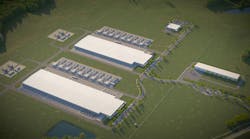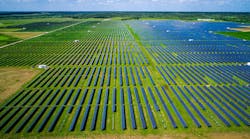Latest from Technology
Demand for solar photovoltaic (PV) power systems continued to grow in 2018 despite uncertainty and volatile pricing dynamics. Annual installations reached the long-awaited milestone of 100 gigawatts (GW), a figure that seemed unattainable in 2007.
In this context, analysts at IHS Markit took a look at the solar market and released a whitepaper recently making eight predictions for the solar photovoltaic industry for 2019. They are forecasting 18% growth in the solar PV market for the year, spread across all geographic regions.
“As solar becomes increasingly competitive with conventional sources of power generation, companies are investing in the renewables industry, as never before, attracted by the growing revenue opportunities and the pressure to increase sustainability,” said Edurne Zoco, research director, solar and energy storage, IHS Markit. “Solar and other renewables are also playing a key role in the decentralization and digitalization of the power system, or the so-called ‘energy transition’, which is now on the agendas of many governments, companies and other institutions.”
Titled “Predictions for the PV industry in 2019,” the white paper points to eight significant trends that will drive the market this year. Among them an increasing use of storage technology. The analysts predicted that more than 500 megawatt hours (MWh) of battery storage will be deployed in utility-scale solar plants in North America. The combination of intermittent renewables and batteries has long been considered the key to providing scalable, dispatchable, clean power. In 2019, the first meaningful volumes of these systems will be installed, with the action primarily focused on North America, said a release announcing the paper.
The analysts look for an increase in retrofitting and upgrading existing solar power plants. At the start of 2019, more than 40 GW of PV systems in Europe larger than 100 kilowatts (kW) were more than six years old. Technology costs have fallen dramatically since these installations were completed, so upgrading older PV plants to improve their yield and return on investment is becoming more commonplace.
They also look for continuing diversification among suppliers of inverters, who have been battling stagnation and will look to new lines of business to expand their offerings, IHS said. Solar technology advances also play a role as the race for the 400W PV module will heat up and high efficiency products gain share in the market.
Other predictions include demand growth in Europe’s solar market and that China’s policy decisions will continue to define global dynamics. With China accounting for an estimated 65% of PV module production in 2018 and 41% of global installations, the country clearly dictates the supply-and-demand balance of the industry.









